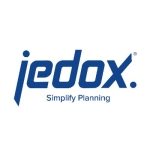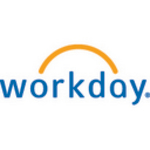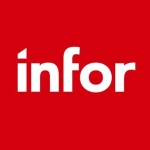What is our primary use case?
We primarily use the solution for budgeting.
What is most valuable?
It's basically the same as the other budgeting solutions. There's nothing different, no bells and whistles that are different. At the end of the day, it gets to the same solution.
The initial setup wasn't overly difficult.
What needs improvement?
I used other EPM software that probably had better reporting that came out of Hyperion.
I would have done some implementation a little bit differently, however, it doesn't mean that they don't have the functions available.
I would love a drill-down feature.
I would love more comment capabilities so that you could put in little notes, cheat notes.
For how long have I used the solution?
We've used the solution for two years.
What do I think about the stability of the solution?
So far, the stability has been fine. There are no bugs or glitches. it doesn't crash or freeze.
What do I think about the scalability of the solution?
Hyperion is basically a jail and cost center platform where you couldn't budget any different than the rules of what Hyperion is telling you to budget buy. If you wanted to budget buy a product within a cost center, you could not do that. You would have to go to the actual cost center and budget it that way. For example, for commercial real estate loans, you would have to go into each individual course center and budget accordingly. I'm not sure if it's scalable in that sense as there isn't necessarily flexibility involved.
Our internal financing team uses it, and they are comprised of 10 to 15 people.
It's being used almost every month as we do forecasting in it. There's monthly input-output. Hyperion on the accounting side is used on a daily basis to load the general ledger information. It's daily, weekly, and monthly. It's being used all the time. I don't know if it can go any further, as it is being used constantly.
How are customer service and support?
We have our internal IT. They're the ones helping out with any questions. On the back end, in terms of direct contact with Oracle, that would be our finance department or accounting department. I don't speak with them.
Which solution did I use previously and why did I switch?
I've used other budgeting programs, for example, Axiom.
We did not use a different solution. Coming to this bank a few years ago, this product was here. They went with this product as their GL system was sun setting. It was a management decision to stay with Oracle, with the GL and it made sense to get the upgrade for Hyperion.
How was the initial setup?
The company already had Hyperion, however, they just upgraded to the cloud version. We went from software to the cloud. There were a few little obstacles when we implemented it last August. It was actually during the budget cycle, which was weird. I didn't see any issues for the most part. That said, I wasn't into the weeds of implementing, allocating, doing all the unit testing, UAT testing, and all that stuff.
I'm not sure how many people were used for the purposes of deployment or maintenance.
What about the implementation team?
While it was mostly handled by the finance department, my understanding is that there was a consultant involved in the implementation process. The solution works, therefore, the process must have gone well.
What was our ROI?
What's my experience with pricing, setup cost, and licensing?
I can't speak to any aspect of the costs. It's not an aspect I handle directly.
What other advice do I have?
I'm just an end-user going into Hyperion.
We've just upgraded to the cloud. I'm the one that's going in and importing all the data into Hyperion.
I'm not sure which version of the solution we're using.
There are many on the market that do the same thing. Oracle has name recognition going for it, however. Personally, I would look at another product I used to use, however, that's just my preference. Many, many years ago, in my last job, I actually had Oracle. We didn't have Hyperion though and everything was sun setting on that. It was my job to go out and go find a solution. We brought Oracle in and Hyperion was a suite of products within the Oracle umbrella. I was looking for a one-stop-shop type of product. If someone's looking for that, this might fit those needs.
I'd rate the solution at a seven out of ten. We're not fully utilizing the product. That said, from what I've seen, what I use, and what I can generate from the product, it's decent.
Which deployment model are you using for this solution?
Public Cloud
Disclosure: My company does not have a business relationship with this vendor other than being a customer.


















